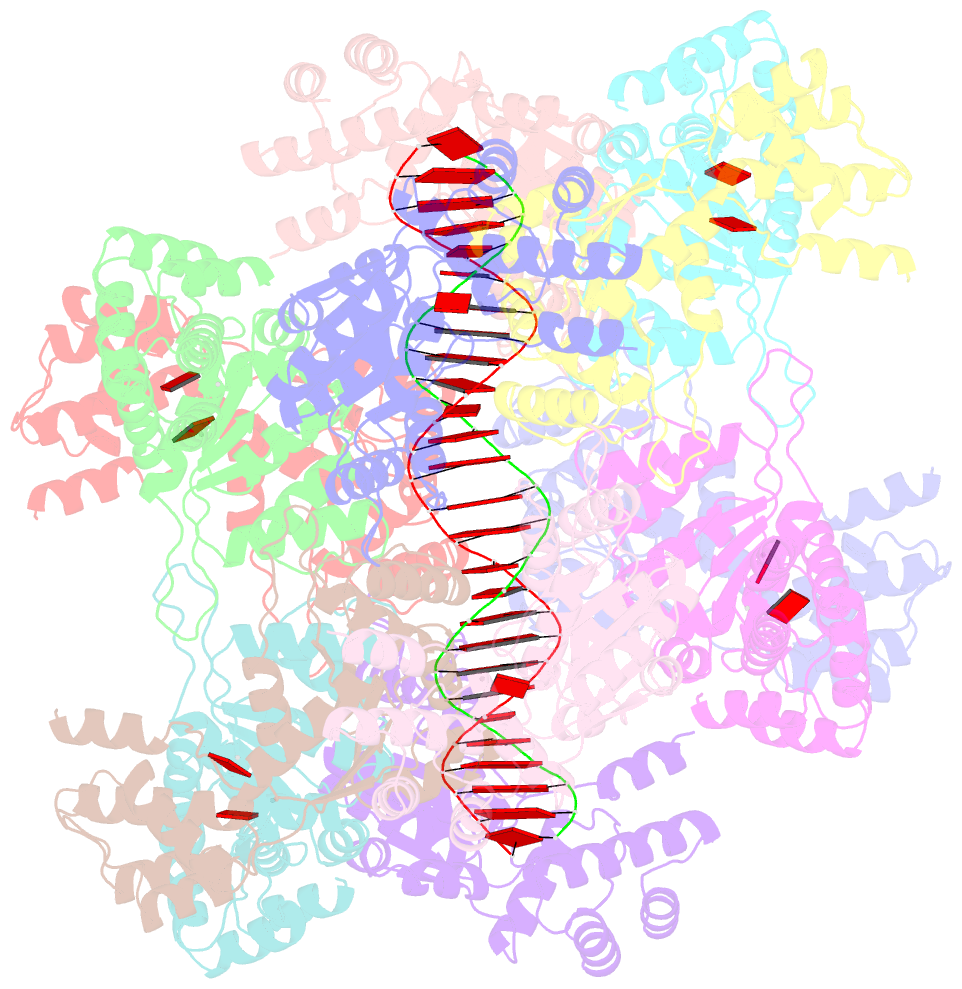Summary information and primary citation
- PDB-id
- 7m9a; SNAP-derived features in text and JSON formats;
DNAproDB
- Class
- DNA binding protein-DNA
- Method
- cryo-EM (3.9 Å)
- Summary
- Adp-alf3 bound tnsc structure from shcast system
- Reference
- Park JU, Tsai AW, Mehrotra E, Petassi MT, Hsieh SC, Ke A, Peters JE, Kellogg EH (2021): "Structural basis for target site selection in RNA-guided DNA transposition systems." Science, 373, 768-774. doi: 10.1126/science.abi8976.
- Abstract
- CRISPR-associated transposition systems allow guide RNA-directed integration of a single DNA cargo in one orientation at a fixed distance from a programmable target sequence. We used cryo-electron microscopy (cryo-EM) to define the mechanism that underlies this process by characterizing the transposition regulator, TnsC, from a type V-K CRISPR-transposase system. In this scenario, polymerization of adenosine triphosphate-bound TnsC helical filaments could explain how polarity information is passed to the transposase. TniQ caps the TnsC filament, representing a universal mechanism for target information transfer in Tn7/Tn7-like elements. Transposase-driven disassembly establishes delivery of the element only to unused protospacers. Finally, TnsC transitions to define the fixed point of insertion, as revealed by structures with the transition state mimic ADP•AlF3 These mechanistic findings provide the underpinnings for engineering CRISPR-associated transposition systems for research and therapeutic applications.





